We are all after content that converts readers into customers, gets shared, builds backlinks, and ranks high in search results.
Those are goals worth seeking, but there's one problem: Focusing on the ends can make you neglect the means.
The simple truth is, you cannot achieve any of those results unless your content manages to engage your target audience.
Engagement is the first milestone on the road to more sales, backlinks, or shares. Nothing beats the satisfaction of getting a flurry of comments on your post.

Source: Giphy
Besides, more than 83 million posts are produced every month on WordPress alone. That's more than 230 posts in a minute. Your content must tick many boxes to stand out from the crowd.
This article will discuss nine ways to make your content more engaging.
1. Don't Tick Them Off Even Before They Read a Word
What good is a performance that takes off after the audience has left?
For a delay of a single second, the bounce rate increases 56%. That's more than half of your visitors. So, before you learn the art of writing engaging content, you must get your site in order.
Here's how:
- Speed: When a visitor lands on your website, the first 2-3 seconds are crucial. You can have content of the highest quality, but it will fail if your page takes ages to load. Even if visitors stay through the delays, the wait will leave a poor impression and lower your chances of conversion.
- Responsiveness: Mobile friendliness (or the lack of it) is another factor that affects the bounce rate. More than 56% of site visits are from mobile devices. If your website is not optimized for the mobile experience, the content will fail to engage.
- Ads: Many blogs fill the above-the-fold space with ads, which is a surefire way to annoy your visitors. Google has started to target ad heavy websites with its recent algorithm update, so avoid using extensive ads. Mobile sites need to ensure that they are following the guidelines and not using interstitial ads or popups.
2. It's All in the Packaging
Science suggests that we "see" the flavor of food before we "taste" it.
The same goes for the content. We see the quality of content before actually reading it.
Look at these two screenshots:
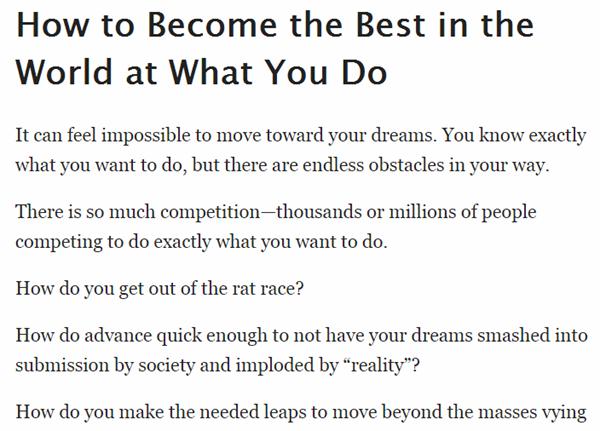
Source: Benjamin Hardy
Now compare that one with this one:
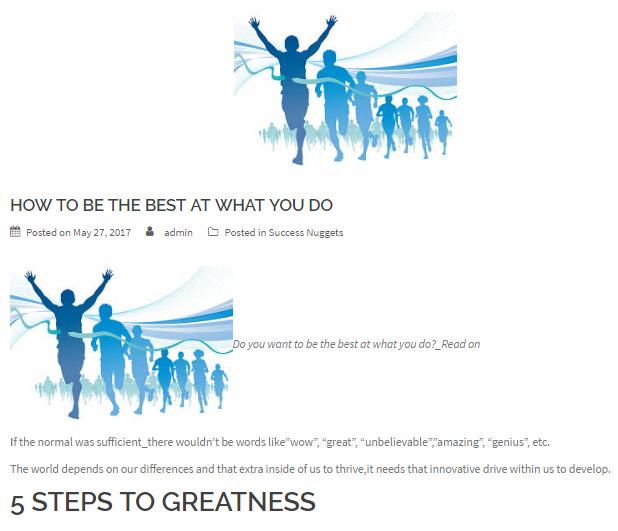
Source: The Genius Conspiracy
Those are two posts on pretty much the same topic. As you can see, the presentation is all over the place in the second one.
The first one looks a lot more convincing even before we start to read.
High-quality typography can induce a positive mood in readers. Still, very few websites pay enough attention to the presentation and typography.
The font type, size, and color you use can make your content a lot more trustworthy. The background color and white space can make it easy to digest.
Readers will not engage with your content if it's difficult to read.
3. Hook Them From Start
Many times, I have put down novels or stopped watching a movie because the opening failed to intrigue.
Middles and endings are important, but it's the beginning that sets the tone. Both your headline and your introduction should make it hard for them to stop reading.
The following are some examples of a catchy title or introduction:
- Ask questions that they can relate with.
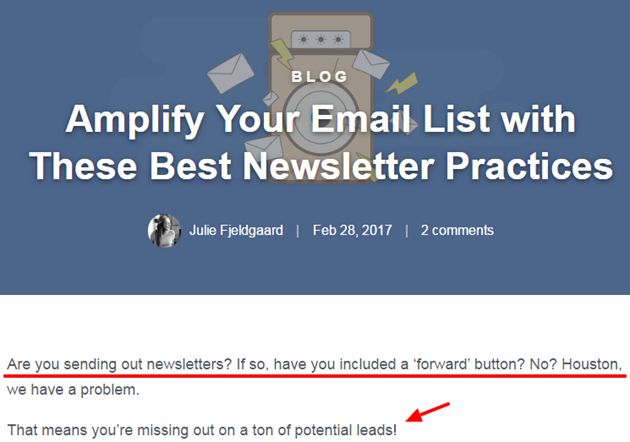
Source: Sleeknote - Take advantage of the surprise and curiosity factor.
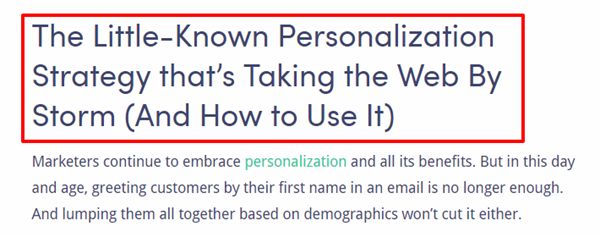
Source: Kissmetrics - Use powerful statistics or numbers to make it more convincing.
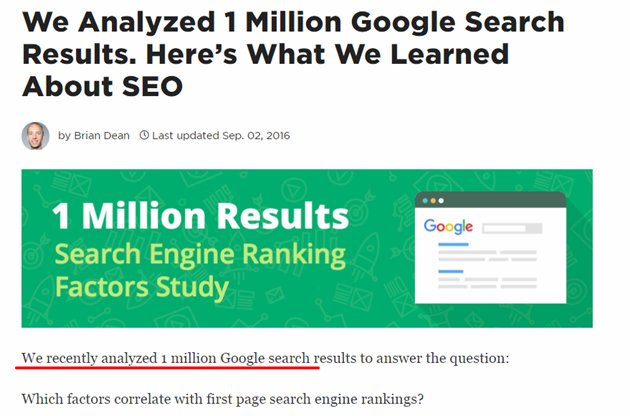
Source: Backlinko
But even better is to forget all such formulas and try to start in the most novel and most unexpected ways.
4. Use Visual Aids
According to a benchmark study by MarketingProfs and Content Marketing Institute, creating engaging content (73%) and creating visual content (55%) were two of the biggest priorities for B2C businesses.
Luckily, those two are interlinked.
Your content will automatically engage more people if you are using visual aids, such as images, illustrations, screenshots, and charts.
Buzzsumo conducted a study of more than 1 million articles and found that those with an image after 75-100 words will get double the shares.
Infographics or maps can work better. In fact, maps turned out to be the most effective format for link-building, according to a study.
For example, see this map of every country's most googled car brand:
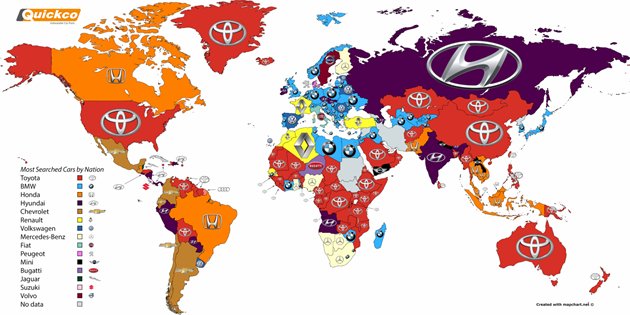
Source: MSN.com
If you don't have the resources to create a visually engaging infographic or map, use screenshots or examples from the Web.
5. If It Moves, It's Alive
A picture is worth a thousand words. So how much is a minute of video worth?
Answer: 1.8 million.
No wonder pages with videos get an 88% higher engagement than pages with text and images. Simply creating and adding a whiteboard video would make your content a lot more credible.
GIFs or cinemagraphs are even better. Unlike videos that users need to click to play, GIFs are in motion the moment visitors land, making them hard to ignore.
Have a look at how this post starts with a GIF and captures your attention:
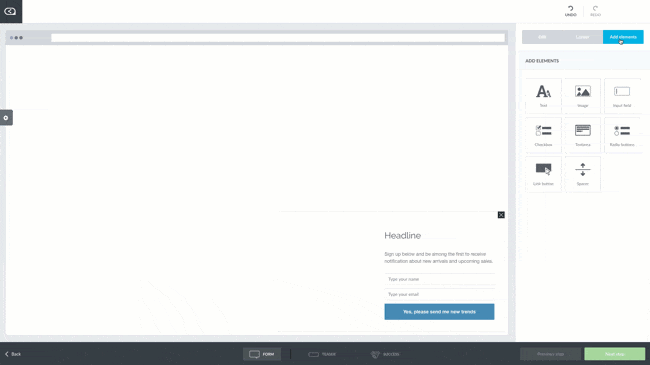
Also, GIFs are an easy way to add humor, and humor can break resistance to influence.
6. Make It More Convincing With Data
There is a long list of citations and references at the end of all scientific studies. It's what makes them credible—and it can do the same for your content.
Keep tabs on the latest news, research, and developments in your industry, and refer to them throughout your content. Backing your points with evidence will make you sound authoritative. And authority demands respect.
Which one of these two sentences will get more engagement?
- I don't think women find six packs as attractive as they are made out to be.
- A study finds "Dad Bods" are more attractive to women than six packs.
As you can see, the second one sounds much more credible. People are more likely to engage and share your post because it's trustworthy.
If possible, do your own research or data analysis and publish the results. That is one of the most effective ways of engaging and getting a link from influencers or high-authority sites.
7. Storytelling
"The universe is made of stories, not atoms." —Muriel Rukeyser
Research suggests that stories can put our brain to work, increasing the likelihood of engaging with the content.
Finding and telling stories is not as difficult as you may think. According to Christopher Booker, there are seven basic plots that you can use for building a story:
- Overcoming the Monster
- Rags to Riches
- The Quest
- Voyage and Return
- Comedy
- Tragedy
- Rebirth
Now, think of your personal experiences, read newspaper or magazines, watch movies, observe people around you, and you will find many stories that fit one of those descriptions.
8. Problem-Solving
The easiest way to grab someone's attention is to provide the solution to one of their problems.
That's why "how to" posts work so well. They can get as much as 55% more views than any other type of content.
Search for the problems or questions on the minds of your target audience. You can find these questions by browsing Q&A websites like Quora or a relevant forum.
Provide a solution with a detailed "how to" post. Show them how it is done with illustrations and screenshots. Even better, walk them through the entire process with a video.
Do that and they will be all ears from start to finish.
9. The Right Tone
How to Win Friends and influence People is one of the best-selling self-help books of all time, and for good reason.
Dale Carnegie has listed six ways of getting people to like you ,and these tips apply to writers as well:
- Be genuinely interested in other people.
- Smile.
- Remember that a person's name is, to that person, the sweetest and the most important sound in any language.
- Be a good listener. Encourage others to talk about themselves.
- Talk in terms of the other person's interest.
- Make the other person feel important.
So... smile through your words. Maintain a positive tone and show that you care. Be genuinely interested in your target readers.
Think of them as your friends. Help them fight the despair and replace it with hope.
Encourage them to speak about their likes and dislikes throughout the post.
Don't try to create a literary masterpiece. Make it easy to read. Use a tool like Hemingway App or Readable to check the readability of your text.
* * *
Hopefully, this post has given you some ideas to improve engagement. The art of creating engaging content will take some practice, but follow these tips and you will start to see improvements in next to no time.
What kind of engagement do you get on your posts? Do you think any of these tips would be of help? Let me know in the comments section.




